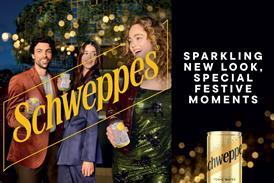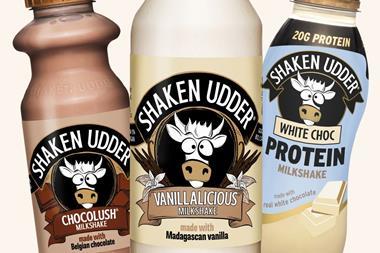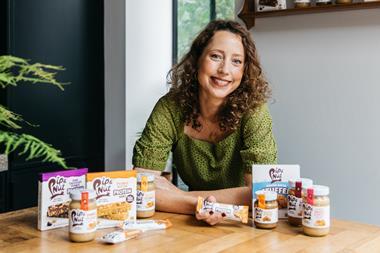Unappealing to look at and worse to taste, long-life milk has long been seen as an unappetising standby, gathering dust in the larder in case of emergency.
But long-life’s image is changing. Dull, brick-like packaging is being replaced by snazzy branding. And manufacturers claim that improved production techniques have made the taste, when chilled at least, very similar to fresh.
The upshot is that after a decline in value and volume between 2006 and 2007, sales of UHT milk leapt 18.1% by value in the year to 13 July. Though much of this can be attributed to rising prices, the real story is in the volume growth. At a solid 2.5%, it reverses the decline of 4.5% in 2007. And the figures for the four weeks to 13 July are even more impressive, showing volume growth of 4.6%. So is this the start of something big?
Milk Link, the UK’s biggest UHT producer, stops short of claiming UHT could ever take over from fresh milk in the UK, as it has in France and Spain, but says there is plenty of scope for further growth. “Fresh milk will continue to be at the heart of the dairy industry, but there is a definite upturn in the long-life market,” says Will Sanderson, corporate affairs director at Milk Link. “We’re confident the market will grow further.”
The producer, which stopped selling fresh milk in September 2006 when its fresh milk dairies were sold to Robert Wiseman, is investing heavily in long-life. Its new £1m Crediton facility includes a high-speed filling line, which will allow it to extend its square packaging format across its lines and fill 15,000 litres an hour. It also plans to invest in the Kirkcudbright facility.
Milk Link’s launch of Moo One% is evidence that new life is being breathed into the category. As well as low-fat credentials, it features lively packaging and a screw-cap.
Promotional activity surrounding both branded and own-label milk has also helped fuel the resurgence. Asda, for example, has been offering four packs of its own-label UHT milk for £2, a deal that has had a significant impact upon sales, according to Ian Williamson, retail manager for Tetra Pak UK.
On average, the retail price of UHT milk is 11p per litre cheaper than fresh, making a big difference to a family budget, he points out.
As well as price benefits, UHT has been billed as environmentally friendly because it doesn’t need to be kept in the chiller in-store. Last year Defra came under fire from the fresh milk sector for proposing people drink more UHT to reduce greenhouse gas emissions. At the time, it was reported that the government hoped to reach a stage where 90% of milk did not require refrigeration. Even UHT milk producers might think this over-ambitious, but they are keen to highlight the environmental and health benefits of UHT milk.
Though it contains slightly fewer B vitamins and less calcium than pasteurised, it remains an excellent source of both. The downside, says Don Williams, CEO of branding and design consultancy Pi Global, is that “it conjures up images of laboratories stripping all the natural goodness out of milk”.
But that’s changing, he says, pointing to the sector’s efforts to reinvent its offer as ‘real milk’ products that happen to be long-life and downplay the letters ‘UHT’ on pack. Its conscious decision to move away from the ‘UHT’ badge to ‘long-life’ is clearly paying off and more and more consumers are buying into the category.
With strong investment, better marketing and price points that appeal to the credit crunch generation, long-life milk could be in for a very long life indeed.n
But long-life’s image is changing. Dull, brick-like packaging is being replaced by snazzy branding. And manufacturers claim that improved production techniques have made the taste, when chilled at least, very similar to fresh.
The upshot is that after a decline in value and volume between 2006 and 2007, sales of UHT milk leapt 18.1% by value in the year to 13 July. Though much of this can be attributed to rising prices, the real story is in the volume growth. At a solid 2.5%, it reverses the decline of 4.5% in 2007. And the figures for the four weeks to 13 July are even more impressive, showing volume growth of 4.6%. So is this the start of something big?
Milk Link, the UK’s biggest UHT producer, stops short of claiming UHT could ever take over from fresh milk in the UK, as it has in France and Spain, but says there is plenty of scope for further growth. “Fresh milk will continue to be at the heart of the dairy industry, but there is a definite upturn in the long-life market,” says Will Sanderson, corporate affairs director at Milk Link. “We’re confident the market will grow further.”
The producer, which stopped selling fresh milk in September 2006 when its fresh milk dairies were sold to Robert Wiseman, is investing heavily in long-life. Its new £1m Crediton facility includes a high-speed filling line, which will allow it to extend its square packaging format across its lines and fill 15,000 litres an hour. It also plans to invest in the Kirkcudbright facility.
Milk Link’s launch of Moo One% is evidence that new life is being breathed into the category. As well as low-fat credentials, it features lively packaging and a screw-cap.
Promotional activity surrounding both branded and own-label milk has also helped fuel the resurgence. Asda, for example, has been offering four packs of its own-label UHT milk for £2, a deal that has had a significant impact upon sales, according to Ian Williamson, retail manager for Tetra Pak UK.
On average, the retail price of UHT milk is 11p per litre cheaper than fresh, making a big difference to a family budget, he points out.
As well as price benefits, UHT has been billed as environmentally friendly because it doesn’t need to be kept in the chiller in-store. Last year Defra came under fire from the fresh milk sector for proposing people drink more UHT to reduce greenhouse gas emissions. At the time, it was reported that the government hoped to reach a stage where 90% of milk did not require refrigeration. Even UHT milk producers might think this over-ambitious, but they are keen to highlight the environmental and health benefits of UHT milk.
Though it contains slightly fewer B vitamins and less calcium than pasteurised, it remains an excellent source of both. The downside, says Don Williams, CEO of branding and design consultancy Pi Global, is that “it conjures up images of laboratories stripping all the natural goodness out of milk”.
But that’s changing, he says, pointing to the sector’s efforts to reinvent its offer as ‘real milk’ products that happen to be long-life and downplay the letters ‘UHT’ on pack. Its conscious decision to move away from the ‘UHT’ badge to ‘long-life’ is clearly paying off and more and more consumers are buying into the category.
With strong investment, better marketing and price points that appeal to the credit crunch generation, long-life milk could be in for a very long life indeed.n















No comments yet